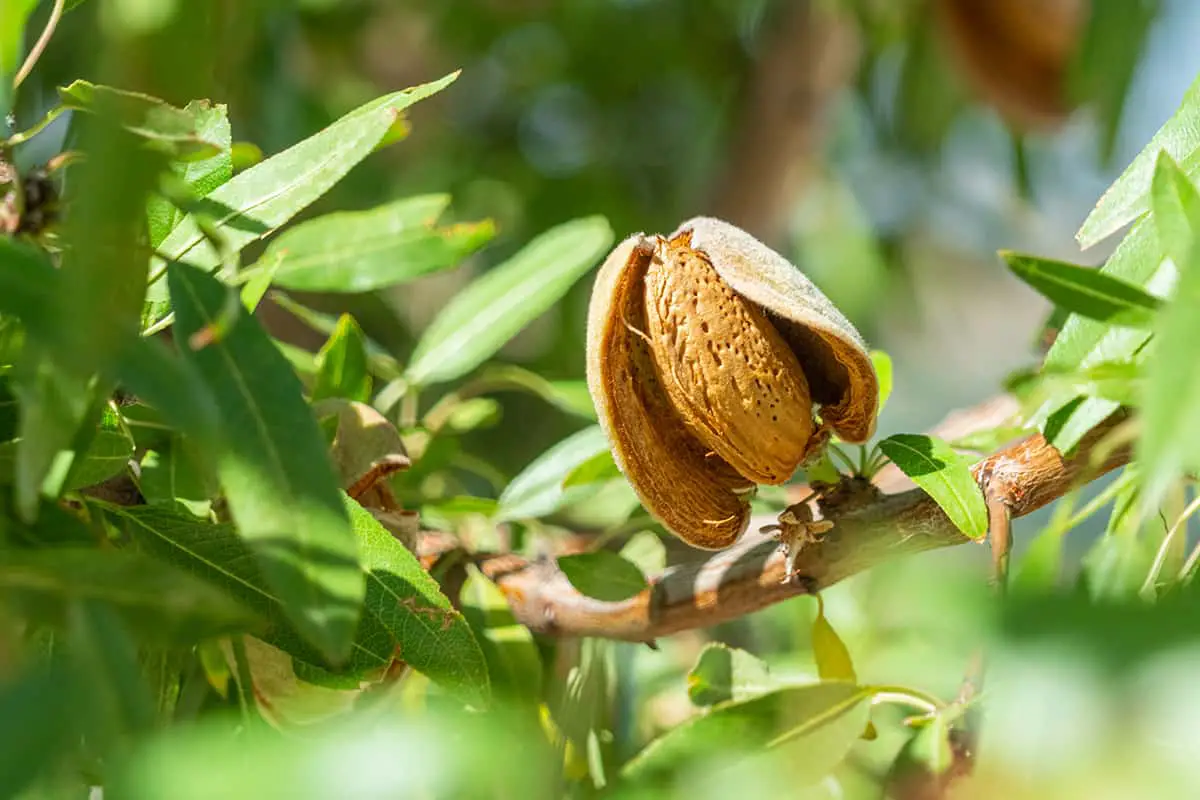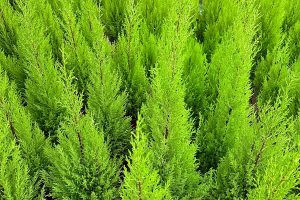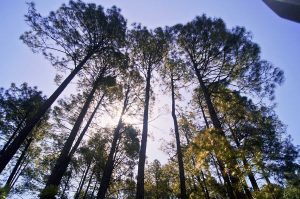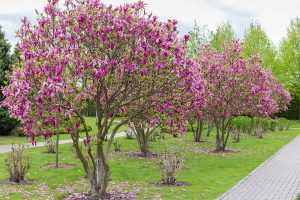Nut trees produce edible fruits which can be enjoyed by wildlife, birds, and humans. Many are notoriously popular with squirrels, and growing these trees can be a great way to invite more wildlife into the garden.
Fast-growing nut trees will add interest and a source of food to the landscape in a short period of time. Here we explore the best fast-growing nut trees.
Table of Contents
Black Walnut Tree
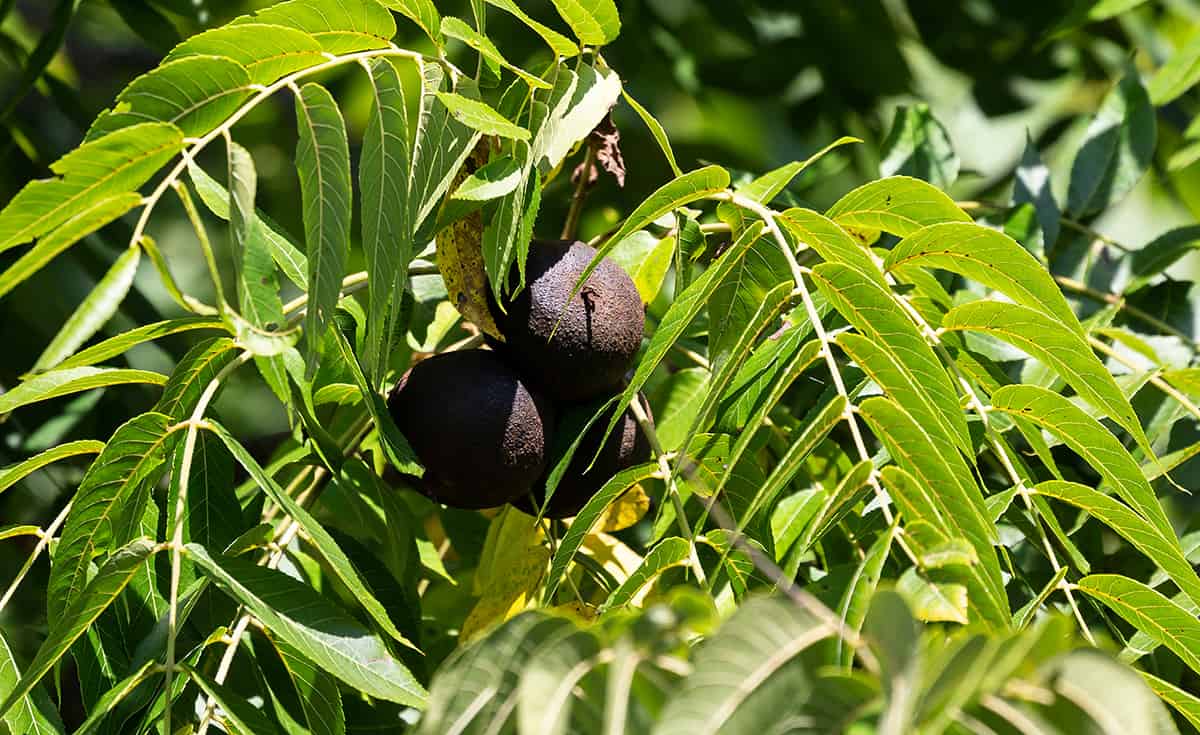
- Botanical name: Juglans nigra
- Common names: Eastern Black Walnut, American Black Walnut
- Plant family: Juglandaceae
- USDA hardiness zone: 4 – 9
- Mature height: 70 to 100 feet
- Mature spread: 70 to 100 feet
The Black Walnut tree is native to North America, where it can be found growing from Ontario in Canada down to Florida in the United States. It is a huge tree that forms a rounded, dense canopy, making it an excellent choice for a shade tree. This is a deciduous tree whose attractive, pinnate leaves emerge in spring.
The foliage is a fresh shade of green until fall when it fades to yellow and drops from the tree. Tiny flowers bloom in spring on dangling catkins, and these largely go unnoticed. These are followed by sweet, edible nuts, enveloped in a green casing.
The tree is commercially cultivated for its fruits and is definitely on our list for trees that bear nuts. It is also an important source of lumber. Black walnut wood is an appealing deep brown color, and it is easy to work with.
How Fast Do Black Walnut Trees Grow?
Black Walnut trees produce a taproot, which is a thick, vertical root anchored deep into the ground. Plants that have taproots are known to grow quite slowly, however, the Black Walnut tree is an exception to this. It grows exceptionally fast when young, gaining around 3 feet in height in its first year as a seedling, and a further 3 to 4 feet in its second year.
After this time, growth will slow down slightly, but it remains a fast-growing nut tree. It is ideal for growing in a spot where you want to create shade quickly.
Black Walnut Tree Care
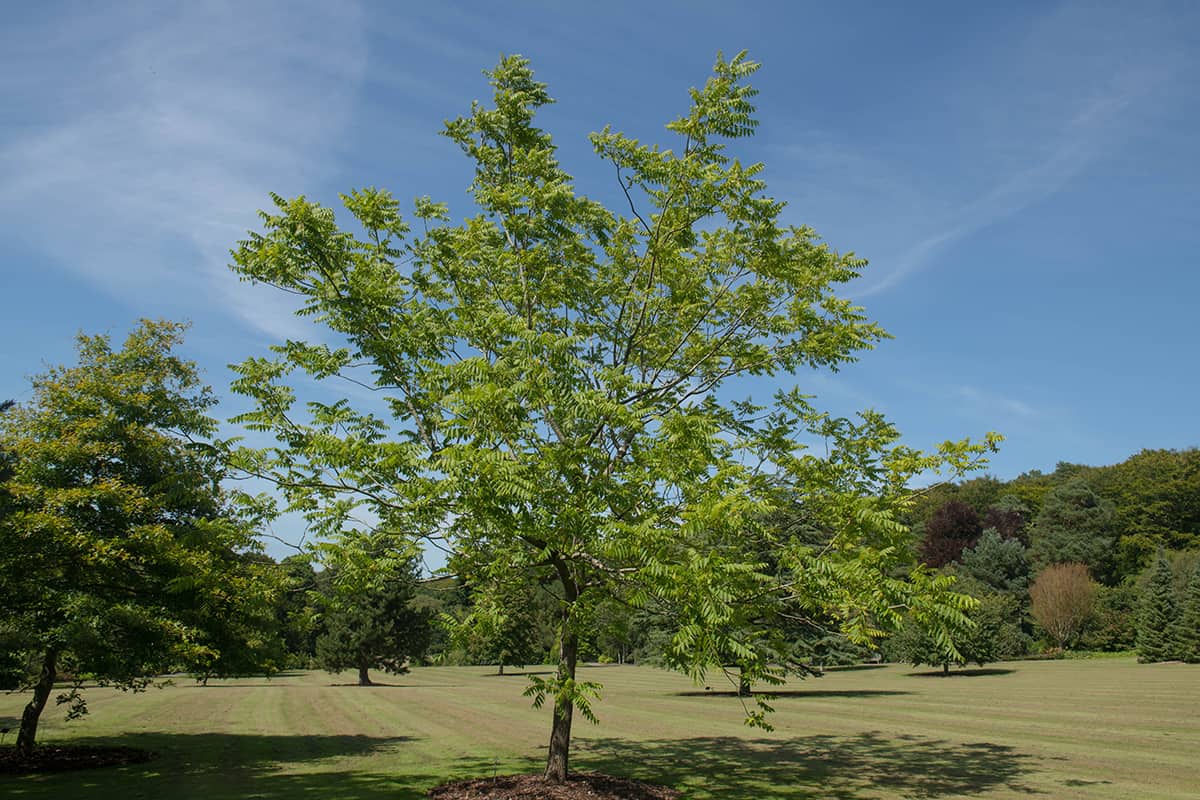
Light
The Black Walnut tree should be grown in a position of full sun. It will fare best when planted in a northern or eastern-facing location, but won’t be affected by other aspects as long as it receives plenty of direct sun each day.
Soil
This tree is not too fussy about the type of soil it is grown in, and will tolerate sandy, clay, or loamy soils providing they are moist and well-draining. Soils must also be deep to accommodate the long tap root of this tree.
Water
The Black Walnut tree is sensitive to drought, so the soil it is growing in should not be allowed to dry out. This is especially important when the tree is young. As it matures it can survive short periods of drought thanks to its tap root, but this can stress the tree. It fares best when grown in climates that experience around 25 inches of rain each year.
Temperature
This is a cold hardy tree that is suitable for growing in USDA hardiness zones 4 to 9. It can survive through frost and snow, though it will benefit from mulching or protection with a garden cloth when very young.
American Hazelnut Tree
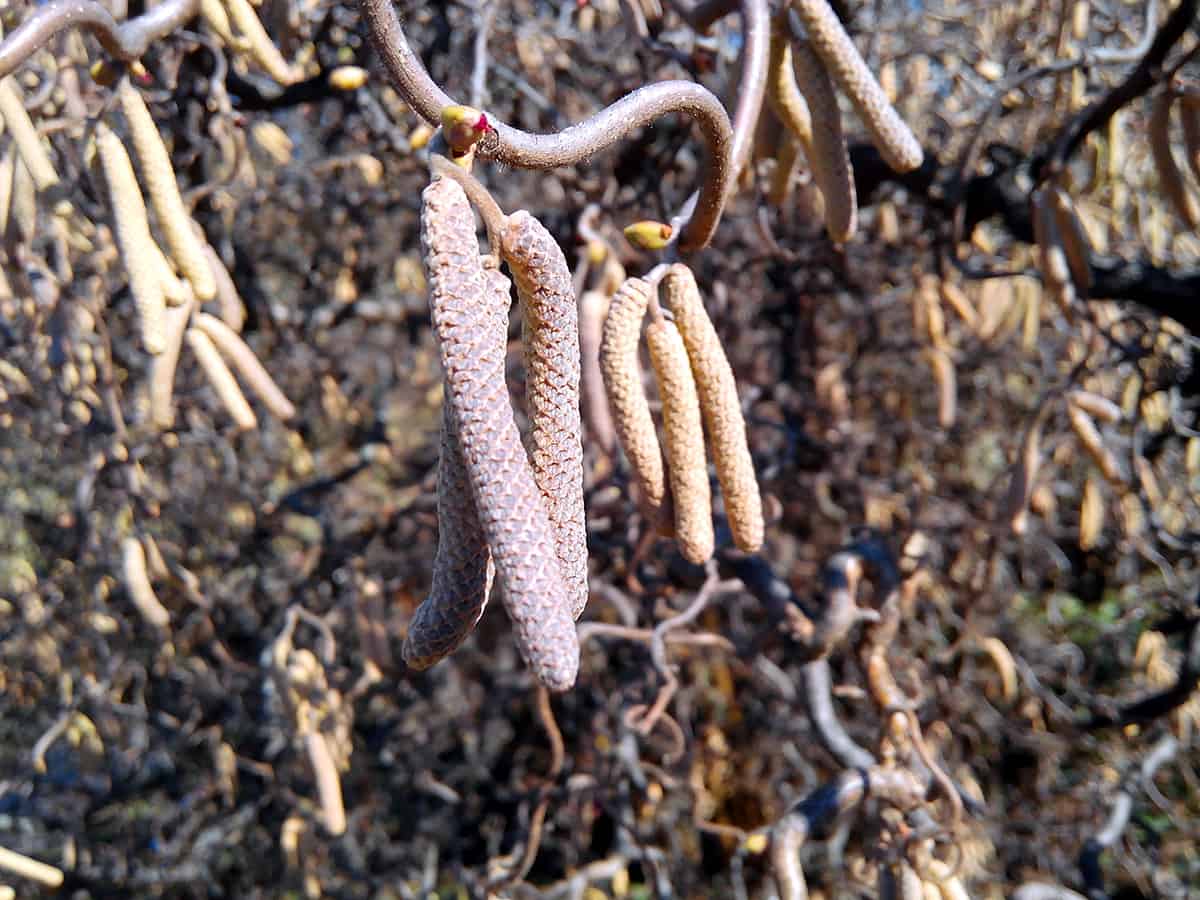
- Botanical name: Corylus americana
- Common names: American Filbert, American Hazel
- Plant family: Betulaceae
- USDA hardiness zone: 4 – 9
- Mature height: 10 to 15 feet
- Mature spread: 8 to 12 feet
The American Hazelnut tree is native to North America, throughout the central and eastern United States, as well as southeastern and south-central Canada. It is a deciduous plant that can take the shape of a large shrub or small tree, and when left undisturbed will spread via suckers to create dense thickets or hedges.
It can also be grown to form an edible privacy screen. The leaves of this plant are quite large at around 5 inches in length, and they are green through summer before fading to shades of red, orange, yellow, and purple in fall. The catkins of this plant emerge in fall as pendulous decorations, measuring up to 3 inches long.
They remain on the tree throughout winter and into early spring, providing interest in the bare branches of the plant. The catkins are followed by edible nuts which are popular with wildlife and humans. These are encased in papery husks which are hairy and unusual looking.
How Fast Do American Hazelnut Trees Grow?
This plant has a fast growth rate of around 2 feet each year. As the expected mature height of the American Hazelnut is 10 to 15 feet, this means it is capable of reaching its full size in 5 to 7 years.
If you are looking for an attractive, edible plant that will provide interest throughout every season then the American Hazelnut is a great choice. It is especially useful for creating a privacy hedge or screen in a short space of time. Unlike many plants which can take a long time to start producing fruits, this nut tree can bear fruit from as young as 2 to 3 years in age.
American Hazelnut Tree Care
Light
The American Hazelnut can grow in any type of light, including full shade, however, when grown in full shade it will produce a significantly lower yield of nuts. It will perform best in a position of full sun or partial shade, requiring at least 4 hours of direct light each day for optimum nut production.
Soil
This plant is not fussy about the type of soil it is grown in. It will thrive in sandy, loamy, average, rich, or clay soils, which are kept moist but not wet. It does not have a preference for alkaline or acidic soils, though enjoys well-draining soil.
Water
The American Hazelnut is drought tolerant once mature, however when young it is best kept in soil that is continually moist. Once established, it can survive solely on rainfall as its only source of moisture.
Temperature
This is a cold hardy tree that is suitable for growing in USDA hardiness zones 4 through 9. It is tolerant of frost and snow.
Almond Tree
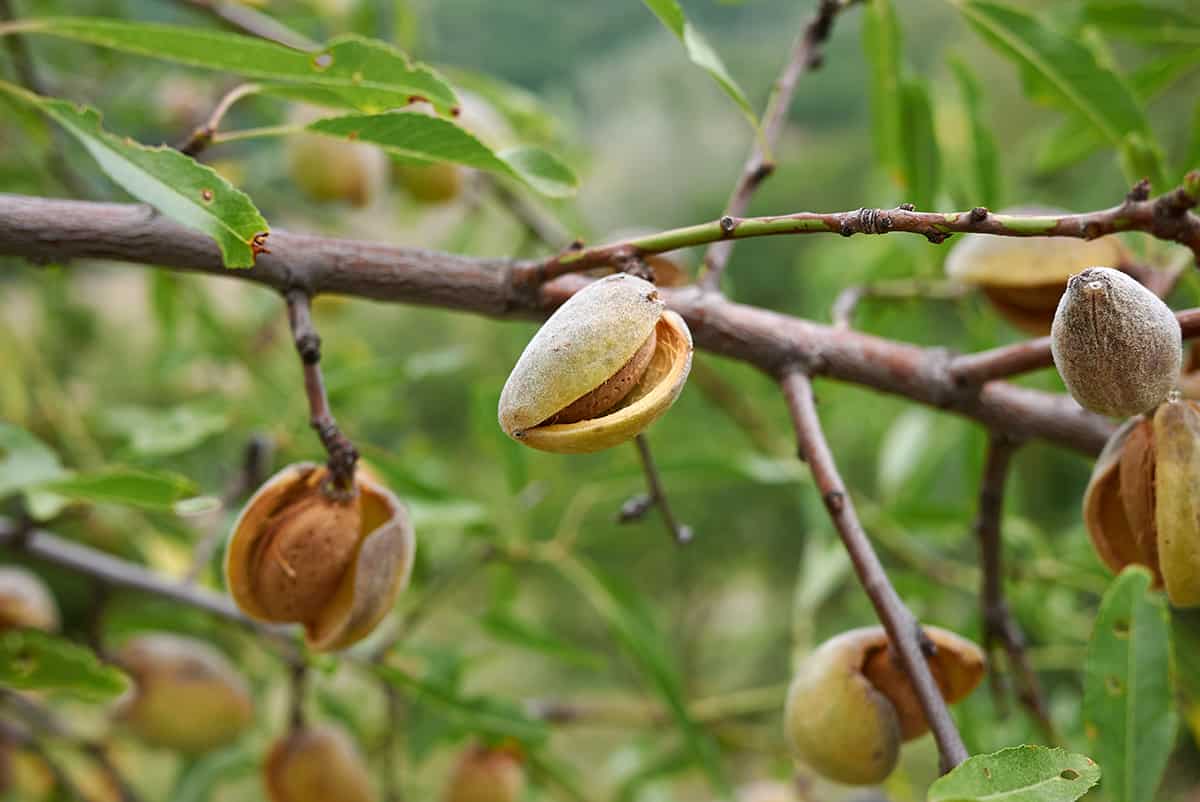
- Botanical name: Prunus dulcis
- Common names: Sweet Almond
- Plant family: Rosaceae
- USDA hardiness zone: 7 -9
- Mature height: 10 to 15 feet
- Mature spread: 10 to 15 feet
The Almond tree is a member of the rose family of plants and is native to Iran. The fruits produced by this tree go by the same name of ‘almond’, and though they are widely referred to as nuts, they are actually a type of drupe. As well as being commercially cultivated for the almonds they produce, this tree is also popularly grown for its ornamental value.
It is deciduous and produces an abundance of baby pink blossoms along bare branches in early spring. These blossoms are delicately fragranced and make for an impressive floral display at a time of year when few other plants are in bloom. The flowers are followed by the fruits, which are pale green in color, with a suede-like texture, containing almond nuts.
The fruits will ripen from late summer through to fall. Though these trees hail from Iran, they are now grown all over the world. More than half of all almonds are produced in California, though whether or not this is sustainable due to drought has become a controversial topic.
How Fast Do Almond Trees Grow?
When an almond tree is grown in ideal conditions, it will grow at a moderate rate of around 1 foot per year, and therefore will reach its eventual height in between 10 and 15 years. If an almond tree is not meeting this level of growth, it will typically be due to a lack of nutrients. Apply a nitrogen-based fertilizer in spring and summer to encourage faster growth.
Almond Tree Care

Light
Almond trees thrive in full sun, and this is required to produce an abundance of flowers. When grown in partial shade, flowering will be reduced.
Soil
Almond trees should be grown in soil that is fertile and well-draining. Deep soil is also preferred. Though these trees are drought tolerant, they will perform best in moist soils. They can survive in poor soils, though growth may become slower. Almond trees will not tolerate soils that do not drain well.
Water
Almond trees thrive in moist soil, but they can survive drought. To maintain good moisture levels in dry climates, mulch the soil and provide supplemental water every week through spring and summer. The soil should ideally remain moist but not wet.
Temperature
Almond trees fare best in Mediterranean climates where the summers are long, hot, and dry, and the winters are wet and mild. Though almond trees are sensitive to frost which can destroy their early blooming flowers, they do need to experience a cold snap each year to break dormancy. They should be subjected to between 300 and 600 hours of temperatures lower than 45°F each winter.
